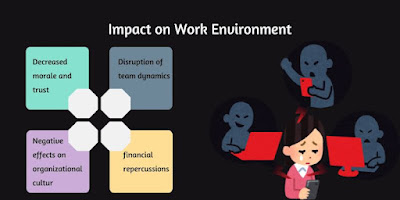Workplace harassment is a critical issue that affects employees' well-being, productivity, and overall company culture. Despite increased awareness and legal frameworks designed to combat harassment, it remains a pervasive problem in many organizations. This article will delve into the various forms of workplace harassment, provide insights based on recent research, and offer strategies for managers to foster a healthy work environment that prevents harassment of any kind.
What is Workplace Harassment?
Workplace harassment is any unwelcome conduct based on race, color, religion, sex, national origin, age, disability, or genetic information that creates a hostile, intimidating, or offensive work environment. Harassment can take many forms, including verbal abuse, physical intimidation, unwanted sexual advances, and discriminatory practices. It can occur between colleagues, from supervisors to subordinates, or even from clients or customers toward employees.
The impact of workplace harassment is profound, leading to decreased job satisfaction, increased stress, and higher turnover rates. It can also result in significant legal costs and damage to a company's reputation.
Research Data on Workplace Harassment
Recent studies highlight the ongoing prevalence of harassment in the workplace. According to a 2022 report by the Equal Employment Opportunity Commission (EEOC), nearly 70% of workers have experienced some form of harassment at work, but only 25% of these incidents are reported. This discrepancy often stems from fear of retaliation, mistrust in the reporting process, or a belief that nothing will change.
Sexual harassment remains a significant issue, with 48% of women and 22% of men reporting experiences of sexual harassment in the workplace, according to a 2021 survey by the National Women’s Law Center. Additionally, racial and ethnic minorities often face discriminatory harassment, with 42% of Black employees and 34% of Hispanic employees reporting race-based harassment.
These statistics underscore the urgent need for companies to take proactive measures to prevent harassment and ensure a safe and inclusive workplace for all employees.
The Role of Management in Preventing Harassment
Managers and leaders play a crucial role in preventing workplace harassment. They are responsible for setting the tone, establishing clear policies, and taking immediate action when issues arise. Here are some key strategies managers can implement to promote a healthy and harassment-free work environment.
1. Establish Clear Anti-Harassment Policies
The first step in preventing workplace harassment is to establish clear, comprehensive anti-harassment policies. These policies should define what constitutes harassment, provide examples, and outline the procedures for reporting and addressing complaints. It is essential that these policies are communicated to all employees and are easily accessible.
Anti-harassment policies should include:
- A clear definition of harassment: This should cover all forms of harassment, including sexual harassment, racial harassment, and bullying.
- Reporting procedures: Employees should know how and where to report incidents of harassment. Multiple reporting channels should be available, including anonymous options.
- Consequences for violations: The policy should outline the disciplinary actions that will be taken against those found guilty of harassment.
- Protection against retaliation: Employees should be assured that they will not face retaliation for reporting harassment.
2. Provide Regular Training and Education
Training is a critical component of harassment prevention. Regular, mandatory training sessions should be conducted for all employees, including managers and executives. These sessions should educate employees about the types of harassment, how to recognize it, and how to respond if they witness or experience it.
Effective training should:
- Be interactive: Engage employees with real-world scenarios, role-playing, and discussions to reinforce learning.
- Focus on empathy and understanding: Help employees understand the impact of harassment on victims and the importance of maintaining a respectful workplace.
- Include bystander intervention training: Empower employees to act when they witness harassment by teaching them safe and effective ways to intervene.
3. Foster an Inclusive Workplace Culture
Creating an inclusive culture where diversity is celebrated and all employees feel valued is one of the most effective ways to prevent harassment. When employees feel respected and included, they are less likely to engage in or tolerate harassing behavior.
To foster an inclusive culture, managers should:
- Promote diversity and inclusion: Encourage the recruitment and promotion of individuals from diverse backgrounds. Ensure that all voices are heard and respected.
- Lead by example: Managers should model the behavior they expect from their employees. This includes treating everyone with respect, being open to feedback, and addressing inappropriate behavior immediately.
- Encourage open communication: Create an environment where employees feel comfortable speaking up about issues without fear of retaliation. Regularly solicit feedback and be transparent about how concerns are addressed.
4. Take Immediate Action on Complaints
When harassment is reported, it is crucial that management takes immediate and appropriate action. This not only resolves the issue at hand but also sends a strong message that harassment will not be tolerated.
Steps to take when a complaint is made include:
- Investigate promptly: Conduct a thorough and impartial investigation into the complaint. Ensure that the process is confidential and that the complainant feels supported.
- Take corrective action: If the investigation confirms harassment, take immediate disciplinary action against the perpetrator. This could range from a warning to termination, depending on the severity of the offense.
- Follow up: After the resolution of a complaint, follow up with the complainant to ensure that the harassment has ceased and that no retaliation has occurred.
5. Monitor and Review Workplace Practices
Preventing workplace harassment is an ongoing process. Managers should regularly review and monitor workplace practices to ensure that policies and procedures are effective and that the work environment remains safe and respectful.
Ways to monitor and review include:
- Conducting regular surveys: Use anonymous surveys to gauge employees' perceptions of workplace safety and to identify any areas of concern.
- Reviewing incident reports: Regularly analyze reports of harassment to identify patterns or recurring issues. Use this data to refine policies and training programs.
- Holding regular meetings: Have regular meetings with HR and other relevant departments to discuss harassment prevention efforts and any necessary adjustments.
The Emotional and Financial Impact of Workplace Harassment
The consequences of workplace harassment extend beyond the individual victims to affect the entire organization. Employees who experience or witness harassment often suffer from increased stress, anxiety, and depression, leading to decreased productivity and job satisfaction. This, in turn, can result in higher absenteeism, increased turnover, and difficulty attracting and retaining talent.
Financially, companies that fail to address harassment may face costly lawsuits, settlements, and legal fees. According to the EEOC, employers paid out more than $68 million in monetary benefits to employees in harassment cases in 2021 alone. Beyond direct financial costs, the damage to a company's reputation can have long-lasting effects on its ability to do business.
Conclusion: Creating a Harassment-Free Workplace
Preventing workplace harassment requires a concerted effort from everyone within an organization, but it begins with strong leadership and clear, consistent policies. By establishing a zero-tolerance approach to harassment, providing ongoing education and training, and fostering a culture of inclusion and respect, managers can create a work environment where all employees feel safe, valued, and empowered to perform at their best.
As research shows, the prevalence of workplace harassment is still alarmingly high, but with the right strategies in place, companies can reduce its occurrence and protect their employees' well-being. The benefits of a harassment-free workplace are clear: happier employees, increased productivity, and a stronger, more resilient organization. By prioritizing the prevention of harassment, managers not only fulfill their legal and ethical obligations but also contribute to a healthier and more positive workplace culture.
.jfif)
.jfif)
.jfif)
.jfif)
.jfif)



.jfif)

.jfif)




.jfif)

.png)

.jfif)




.png)




.png)
.jfif)




